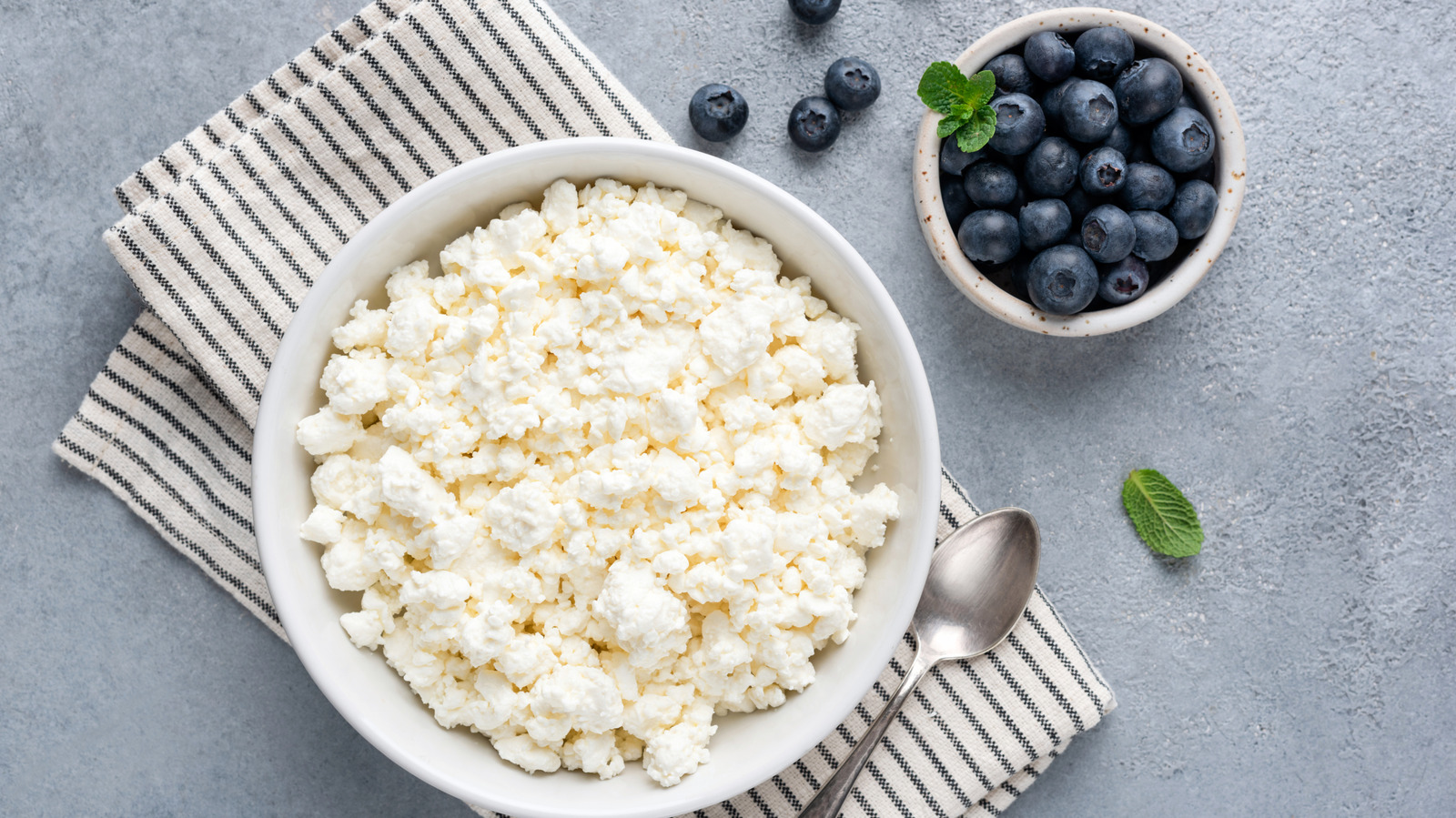Cottage cheese is hardly new. It has been made and eaten for thousands of years (though it only got its homey name in the 19th century), and remains a breakfast staple. But in recent years, cottage cheese has garnered more and more attention. Cottage cheese lovers on TikTok and Instagram have posted their cottage cheese recipes and preferences for all to see. This has caused a renewed interest in the creamy, fresh cheese. However, with so many people flocking to the grocery store to grab a tub of cottage cheese, there is bound to be some confusion, particularly with regards to curd size. Besides fat content, the two main types of cottage cheese available at the grocery store are large and small curd varieties. Whether you’re using cottage cheese in pasta sauce, adding it to your breakfast bowl, or making these easy 3-ingredient cottage cheese waffles, the size you choose is important.
Both cheeses are made in the same way, by combining milk with an acidic ingredient or bacteria known as rennet. The combination will create a curd — the solid, white substance that forms as the cheese is fermented and the milk becomes sour. The cheese is then cut into chunks and drained of whey before packaging. In general, there is no difference in processing between small and large curd cottage cheese, except for the size of the cutter used to cut the curd.
The low down on large and small curd cottage cheese
The only real difference between large and small curd cottage cheese is the size, so you might assume that the two cottage cheeses taste identical, too. But you’d be wrong. There are avid small curd lovers, and then there are those that prefer large curd, and for good reason. As it stands, size really does have an impact, at least when it comes to cottage cheese. Large curd cottage cheese is often perceived to have a more mild, sweet taste and a creamier texture. This is because each curd holds more moisture than its smaller counterparts.
Small curd cottage cheese, on the other hand, has less moisture, and a sharper, more acidic taste as a result. However, the tanginess of your cottage cheese depends more on how it is processed, whether it be with rennet or acid. Cottage cheese made with rennet, a naturally occurring enzyme, is less tangy than that produced with acid. That being said, the simple difference of curd size can make all the difference in your dining experience. If you want a more acidic flavor profile and less chunky texture, go for small curd. However, if you’d prefer something creamier and sweeter, reach for the large curd (and make it full fat if you want it extra creamy). While ricotta shares a lot of similarities with cottage cheese, here’s why they’re not interchangeable.






